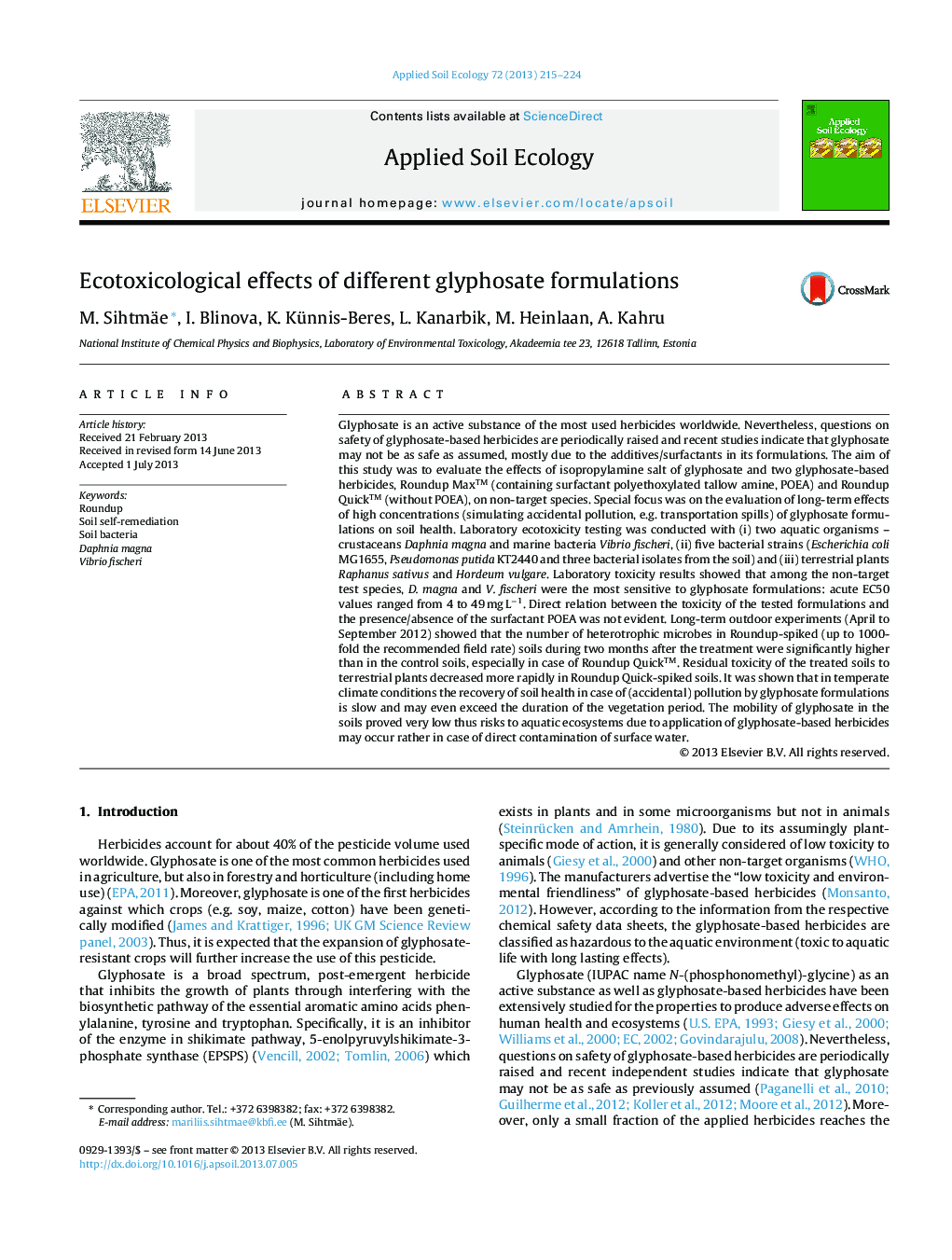| کد مقاله | کد نشریه | سال انتشار | مقاله انگلیسی | نسخه تمام متن |
|---|---|---|---|---|
| 4382341 | 1617811 | 2013 | 10 صفحه PDF | دانلود رایگان |

• Aquatic species were more sensitive to glyphosate than soil bacteria.
• Natural soil bacteria showed different sensitivity to glyphosate-based herbicides.
• Toxicity of Roundup depended on the full composition of the formulations.
• Recovery of soils in temperate climate in case of accidental glyphosate pollution is slow.
Glyphosate is an active substance of the most used herbicides worldwide. Nevertheless, questions on safety of glyphosate-based herbicides are periodically raised and recent studies indicate that glyphosate may not be as safe as assumed, mostly due to the additives/surfactants in its formulations. The aim of this study was to evaluate the effects of isopropylamine salt of glyphosate and two glyphosate-based herbicides, Roundup Max™ (containing surfactant polyethoxylated tallow amine, POEA) and Roundup Quick™ (without POEA), on non-target species. Special focus was on the evaluation of long-term effects of high concentrations (simulating accidental pollution, e.g. transportation spills) of glyphosate formulations on soil health. Laboratory ecotoxicity testing was conducted with (i) two aquatic organisms – crustaceans Daphnia magna and marine bacteria Vibrio fischeri, (ii) five bacterial strains (Escherichia coli MG1655, Pseudomonas putida KT2440 and three bacterial isolates from the soil) and (iii) terrestrial plants Raphanus sativus and Hordeum vulgare. Laboratory toxicity results showed that among the non-target test species, D. magna and V. fischeri were the most sensitive to glyphosate formulations: acute EC50 values ranged from 4 to 49 mg L−1. Direct relation between the toxicity of the tested formulations and the presence/absence of the surfactant POEA was not evident. Long-term outdoor experiments (April to September 2012) showed that the number of heterotrophic microbes in Roundup-spiked (up to 1000-fold the recommended field rate) soils during two months after the treatment were significantly higher than in the control soils, especially in case of Roundup Quick™. Residual toxicity of the treated soils to terrestrial plants decreased more rapidly in Roundup Quick-spiked soils. It was shown that in temperate climate conditions the recovery of soil health in case of (accidental) pollution by glyphosate formulations is slow and may even exceed the duration of the vegetation period. The mobility of glyphosate in the soils proved very low thus risks to aquatic ecosystems due to application of glyphosate-based herbicides may occur rather in case of direct contamination of surface water.
Figure optionsDownload as PowerPoint slide
Journal: Applied Soil Ecology - Volume 72, October 2013, Pages 215–224